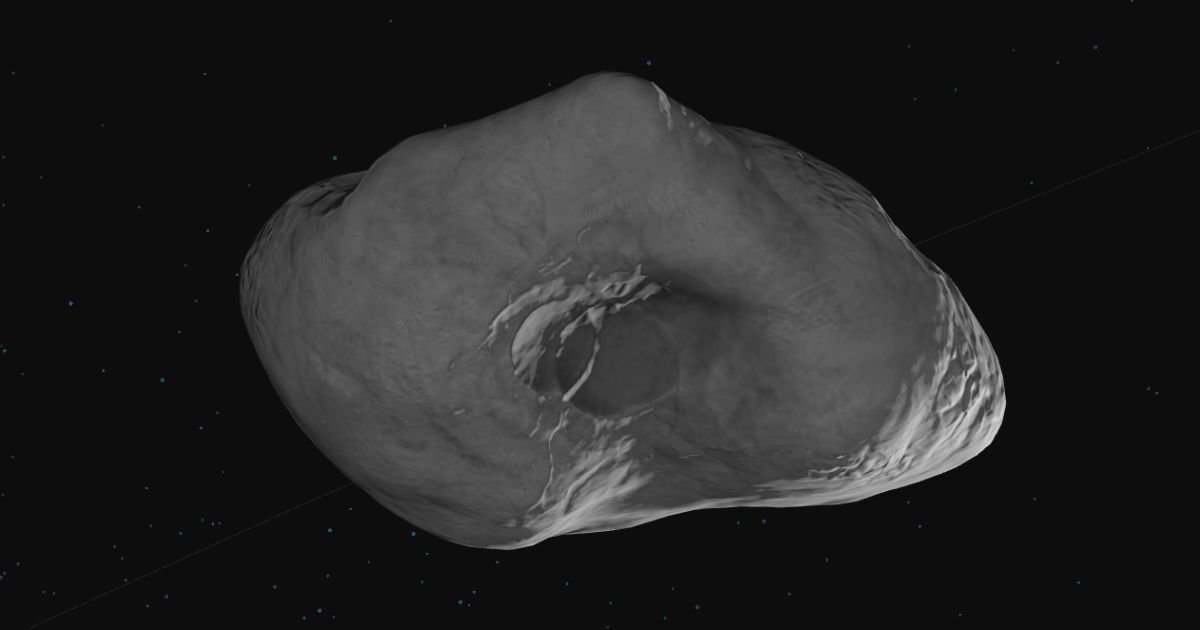If you were making big plans for a Valentine’s Day getaway in the year 2046, make sure your deposit is refundable.
That’s the day a newly discovered asteroid is scheduled to impact Earth.
Well, maybe — but probably not.
The European Space Agency discovered a previously unknown asteroid on Feb. 26 and named it 2023 DW, according to CBS News.
The agency said the object — which is estimated to have a diameter of about 50 meters, or about the size of an Olympic swimming pool — has a 1-in-607 chance of impacting our planet.
Those odds sound pretty slim, but even so, that score earned the object a rating of “1” on the Torino Scale, which put it at the top of the organization’s “risk list” of objects that might someday potentially collide with Earth.
Granted, a score of 1 still leaves 2023 DW in the green zone, described as a “routine discovery in which a pass near the Earth is predicted that poses no unusual level of danger.”
Still, that score is still notably higher than all 1,448 of the other objects on the Torino Scale, which have a rating of “0,” meaning the “likelihood of a collision is zero, or is so low as to be effectively zero.”
Despite all of these reassurances, astronomers apparently thought it would be fun to crunch some numbers to come up with the date this near-earth object might make an appearance on the third rock from the sun.
After running some quick calculations regarding probabilities and trajectories, astronomer Piero Sicoli announced in a Twitter post that he found “about 1 in 400 chance of impact on Feb. 14, 2046.”
“Surely this possibility will soon be ruled out,” he added. “[H]owever, as an exercise, I calculated where the asteroid might fall if this possibility occurred.”
Sicoli posted an image showing a world map with a line of red dots representing potential impact points stretching from just south of India, across the Pacific Ocean, over the southern U.S. and tapering off in the Atlantic, somewhere around Bermuda.
#2023DW. With just 3 days of arc, I found about 1 in 400 chance of impact on Feb. 14, 2046 (JPL 1/770). Surely this possibility will soon be ruled out, however, as an exercise, I calculated where the asteroid might fall if this possibility occurred. pic.twitter.com/ldlSYJMvMz
— PS (@Piero_Sicoli) March 2, 2023
NASA announced in a Twitter post this week that it, too, is monitoring the object. The U.S. space agency joined its European counterpart in proclaiming that 2023 DW “has a very small chance of impacting Earth in 2046.”
“Often when new objects are first discovered, it takes several weeks of data to reduce the uncertainties and adequately predict their orbits years into the future,” NASA said.
“Orbit analysts will continue to monitor asteroid 2023 DW and update predictions as more data comes in.”
We’ve been tracking a new asteroid named 2023 DW that has a very small chance of impacting Earth in 2046. Often when new objects are first discovered, it takes several weeks of data to reduce the uncertainties and adequately predict their orbits years into the future. (1/2) pic.twitter.com/SaLC0AUSdP
— NASA Asteroid Watch (@AsteroidWatch) March 7, 2023
Orbit analysts will continue to monitor asteroid 2023 DW and update predictions as more data comes in. Explore this asteroid and others: https://t.co/vXY8HDjycJ (2/2)
— NASA Asteroid Watch (@AsteroidWatch) March 7, 2023
Even if 2023 DW does turn out to have a higher-than-expected chance of getting here, NASA is developing technology to destroy asteroids that threaten the existence of life on Earth.
One such invention is the Double Asteroid Redirection Test spacecraft, which was deployed in November 2021 and flew 7 million miles before striking an asteroid that was much larger than 2023 DW. The man-made impact “successfully altered the asteroid’s orbit,” NASA reported.
“All of us have a responsibility to protect our home planet,” NASA Administrator Bill Nelson said, according to the news release. “After all, it’s the only one we have.”
Nelson said the DART mission “shows that NASA is trying to be ready for whatever the universe throws at us. NASA has proven we are serious as a defender of the planet.”
“This is a watershed moment for planetary defense and all of humanity, demonstrating commitment from NASA’s exceptional team and partners from around the world,” he said.
This article appeared originally on The Western Journal.















 Continue with Google
Continue with Google